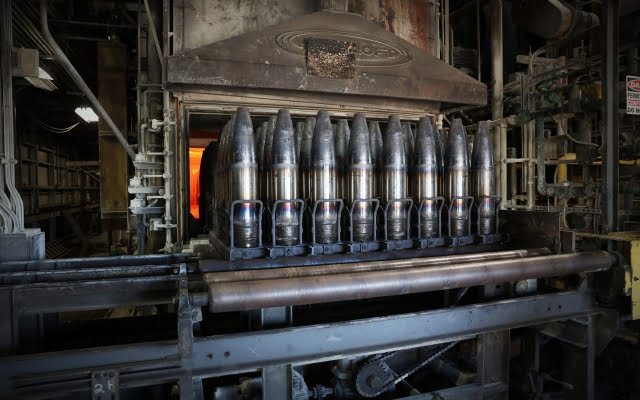 Trays with 40 projectiles are sent to the oven for four hours, after which they are cooled in an oil bath, a process that ensures they will later explode to the shards. Photo: Dan Callister.
Trays with 40 projectiles are sent to the oven for four hours, after which they are cooled in an oil bath, a process that ensures they will later explode to the shards. Photo: Dan Callister.
The huge factory produces just over 11,000 155mm rounds each month, which is the majority of the total US monthly production of 14,000 rounds.
However, the Ukrainian army already uses an average of 7,700 shells. 155-mm shells every day, raising fears that even the might of the US defense industry will not be enough to keep its guns silent.
In total, the US has already sent more than a million 155mm rounds to Kiev since the February 24, 2022 invasion, depleting its own stocks.
The Pentagon is investing $120m (£96m) in the Scranton plant. as he aims to double America's total production of 155mm shells by the end of this year and increase it by 500 percent in five years.
Fire and forging are simmering everywhere in the humming factory floor.
“This robot works 24 hours a day,” Rich Hansen, who oversees operations, told The Telegraph as a giant claw contraption pulled a red-hot projectile from the fire.
“If you make a 2000-degree mistake is a disaster,” he said.
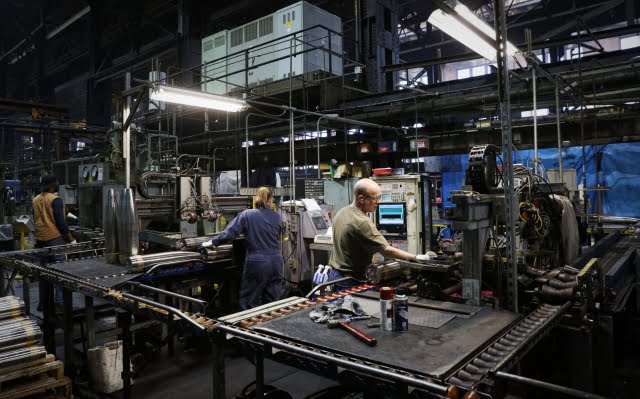 The staff is working around the clock to keep up with demand. Photo: Dan Callister
The staff is working around the clock to keep up with demand. Photo: Dan Callister
The plant is owned by the US Army but operated by General Dynamics Corp.
Nearly half of the hundreds of employees are military veterans, including Mr. Hansen, who spent 25 years as an army aircraft maintenance officer.
He said: “We make bullets. We make a solid piece. We are doing everything in our power to produce in excess of [the current requirement of 11,000].»
Having lifted a projectile weighing almost 100 pounds, he added: «They are designed — on impact — to break into small pieces of nickel and a dime. maybe a quarter of the size.
«We want to make sure that when a fighter uses this cartridge, it works as intended.»
The plant was built in 1908 to serve railroad locomotives, and in 1951 was transferred to the US Army for production ammunition for the Korean War.
The hull forging process is mesmerizing and beautiful to look at
.
p>
On a vast 15-acre site, metal rods 20 feet long, each weighing 2,000 pounds, arrive by truck and are lifted into the plant by a giant magnet on a crane.
Arms Ukraine — M777
Lathes cut the rods into 14-inch sections, called blanks, which are then heated in a forge.
Using a series of hydraulic presses, they are stretched to 3 feet in length and gouged out.
They are then lowered into the «subway» maze, where they travel for hours on conveyor belts, cooling down.
Workers check the quality, smooth out the roughness on the cases and weld copper strips around the base.
About 30 pounds of material is cut from one end to make a tapered nose.
Mr. Hansen said, “It's like cutting off the top of a Coke can and then trying to squeeze that Coke can up your nose without leaving a wrinkle. Because these folds will turn into cracks.
The 40-cartridge trays are then sent to another oven for four hours, followed by a cooling oil bath, a process that ensures they later shatter into fragments as intended when used on the battlefield.
They undergo hydrostatic and ultrasonic testing, and the rejected projectiles are marked with a red cross and disposed of. war. Photo: Dan Callister
«When you're working in thousands per inch, there's very little room for failure,» said Mr. Hansen.
“There are no repetitions here. You must know that you are sending a 100 percent acceptable portion. Our goal is to get as many parts for the fighter as possible.”
The tested rounds are spray-painted green and stacked row after row.
Thousands of them lined the factory floor ready to ship. It takes a whole minute to walk past them.
“Army green, you should like it. It's history,” said Mr. Hansen.
Many analysts, including military planners, believed that the key role of 155-mm shells in the war was history, but Ukraine showed the opposite.
“ The war in Ukraine turned into an artillery war,” said the Colonel of the Marine Retired Infantry Mark Kanchian, Senior Advisor at the Center for Strategic and International Studies in Washington.
“While weapons such as Himars and Javelins have received the most media attention, artillery has proven that it is still the «king of battles» in terms of the intensity of its use.
For the United States, the war in Ukraine caused the largest spike in munitions production in decades.
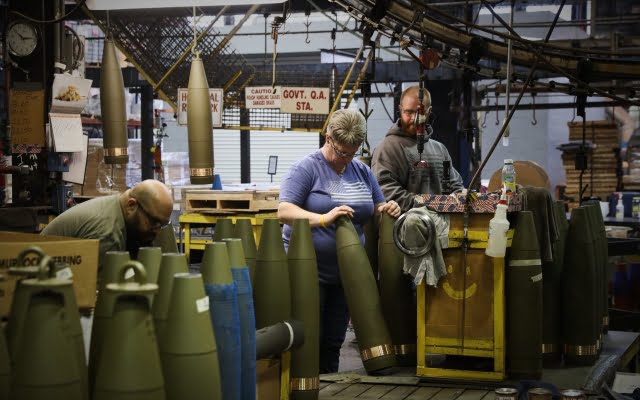 Factory workers, many of whom are military veterans carry out quality checks. : Dan Callister
Factory workers, many of whom are military veterans carry out quality checks. : Dan Callister
European allies are also ordering more military equipment from the US as their own stocks are depleted by the war in Ukraine.
“The Ukrainian army has probably doubled during the war, so as new units are created, artillery is needed to equip them. There is nothing in the artillery cabinet.”
Last month, the European Union agreed to a €2bn (£1.7bn) plan to send one million 155mm artillery shells to Ukraine over the next year, digging into their own reserves and additional purchases through the European Defense Agency.
The Pentagon has plans for a new ordnance manufacturing facility similar to the Scranton plant in Texas and has given Canada $68m (£54m) for «retooling». -tank and surface-to-surface missiles GMLRS.
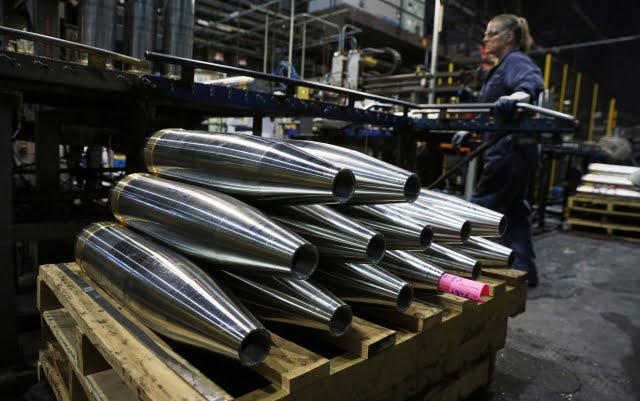 Shells are being stockpiled at the Army Ordnance Factory in Scranton. Photo: Dan Callister
Shells are being stockpiled at the Army Ordnance Factory in Scranton. Photo: Dan Callister
Lockheed Martin, which makes Himars, is doubling annual production from 48 to 96 at its Arkansas plant.
Total, the US government is investing $2 billion this year ($1.6 billion pounds sterling). at arms and ammunition factories.
«We're in do-it-yourself mode,» Doug Bush, US Army Assistant Secretary of Acquisition, said recently.
«The reason we use — a truly maximalist approach, «stepping on the floor, completely sinking», is that we do not know how long the conflict will last.
«We are the arsenal of democracy and always will be, as far as I understand.»< /p>









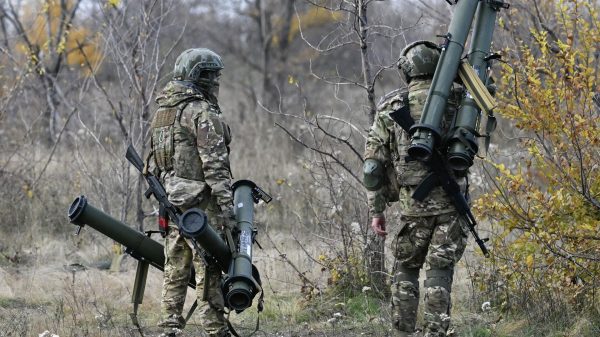
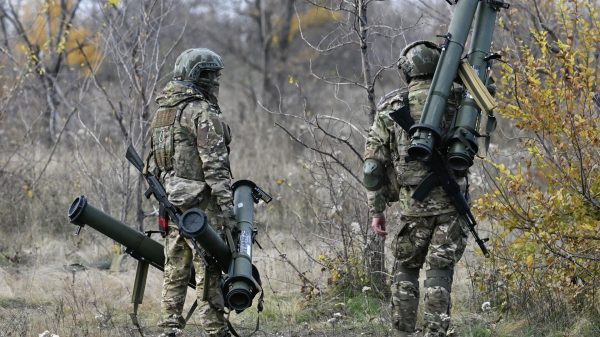












































Свежие комментарии